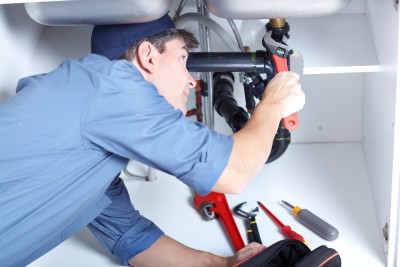Supposedly, the condition of our kitchen says more about us than any other room. Given that, and the myriad things that can go wrong, it’s important to keep your kitchen appliances working flawlessly at all times. And when something goes wrong, you’ll need to fix the problem as quickly as possible. Here are a few of the most common faults, and some tips for eliminating the problem.
Blocked Sinks
A blocked sink is arguably the plumbing disaster we’ll experience the most often. Fat and various waste products are regularly being poured down sinks, so it’s unsurprising that the pipes get clogged on a frequent basis. Ideally, you want to try and tackle the problem as early as possible – if the water starts to take longer to drain away, taking action now could save you a lot of trouble further down the line. Every week, put a tablespoon of baking soda down the sink. Also try to empty fats and food chunks into the bin rather than sending them down the drain.
If you have a stubborn blockage, though, you’ll need a heavier duty solution. Straighten a wire hanger, and use this to poke around. If you can loosen the blockage, pouring some water down the sink may clear the problem. If this fails, you need to use some hot water instead. Boil water in a kettle, and pour it slowly down the sink in several stages. Don’t pour all the water down at once, but instead let it carefully work its way through the debris. Three doses of boiling water should do the trick. If you still haven’t had any success, try combining vinegar and baking soda for a cheap but highly effective drain cleaner – pour the solution down the sink, wait for quarter of an hour, and then wash fresh water down the sink.
Clogged Waste Disposal Units
Perhaps unsurprisingly, these are even more prone to blockages. Like sinks, use either the hot water treatment, or vinegar and baking soda to clear clogs.
Low Water Pressure
If you’re unhappy with the amount of water that your tap puts out, the problem is probably to do with the water pressure being too low. Look at the valves on the water lines – these will be located under your sink. Make sure they’re both fully open. If this hasn’t solved the problem, you’ll probably need to clean the aerator. The aerator will generally be an extra fitting attached to the end of a tap. Attach pliers to it and twist to remove it. Then leave the aerator soaking in vinegar for 12 hours in order to clear any blockages, and replace it.
Under-sink Pipes
We don’t really think about all of those pipes that sit underneath the sink. Indeed, they’ll usually be hidden behind the array of boxes, bottles and other cleaning products that we store underneath the sink. And because of this, it’s all too easy to knock the pipes out of place. If a mystery leak appears on the floor in front of the sink, one of the pipes probably needs to be tightened up. In some cases, an actual leak may have developed in the pipe itself, in which case that part of the pipe will need to be replaced. This isn’t normally as drastic as it sounds, but will still need to be seen to.
Leaking Dishwashers
If water seems to be leaking from the dishwasher, make sure it’s on a flat and level surface, and that the door is closed properly. Assuming there are no problems there, open the front panel and check for loose hoses.

